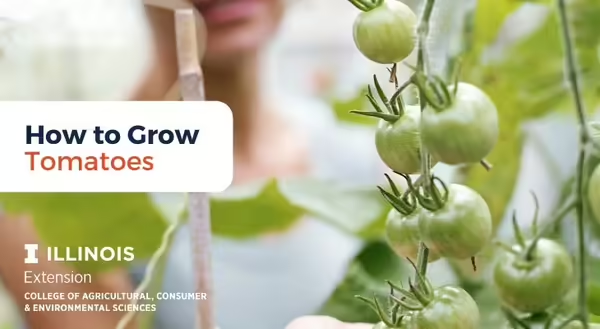
I think my wife likes to torture me. Multiple times a year she buys grocery store tomatoes. You might know where I’m headed with this. These tomatoes are very often bland versions of their flavorful kin. Slicing into the tomato I am usually met with a solid white center. To turn up the flavor I pile the bacon on top of my tomato slice during the assembly of the traditional bacon lettuce and tomato sandwich.
I will admit, grocery store tomatoes have certainly improved over the past several years, but it’s still hard to replace a homegrown tomato picked at the height of ripeness and immediately slicing it up. Often these garden tomatoes do not require a hefty bacon carrier to supplement flavor. We usually slice and eat our garden tomatoes right off the cutting board.
To grow your own tomatoes there are some key items to consider.
Determinant vs indeterminate
The first thing to establish is – Do you have the location and enough room to grow these plants? Tomatoes are full sun crops and they do best with good airflow between plants which reduces disease pressure. Avoid cramming several tomatoes together. Read the seed packet label or the tag you got with your plant. Depending on the type of tomato, you will need to space them out somewhere between 24- to 36-inches apart.
Tomatoes are categorized into two different categories – determinant and indeterminant. Determinate varieties produce their fruits on the growing tips, causing the branch to stop production once the fruit has set. They are most often used for container gardening or small spaces and generally do not need to be trellised or staked. Examples of determinate varieties: Roma, the Mountain series, and Cherry Gold.
Indeterminate tomatoes produce fruit on side branches and will continue to grow all season long. These are often larger plants that require more space and some type of trellising system. Think of these types of tomatoes as you would a traditional vining plant.
Where to Get Your Tomatoes
Direct seeding tomatoes in the garden is one way to start your tomato crop, however, by the time the plants germinate and begin setting fruit, you may not get a tomato until late August. Most gardeners will start their seed indoors, or purchase transplants from a local garden center or farmer.
Type – slicers, sauce, and cherry
What is your favorite way to consume tomatoes? Over generations, humans have bred tomatoes to fulfill various culinary needs.
Slicers or medium to large tomatoes are used on sandwiches, appetizers, and salads. Popular varieties include – Big Beef, Mountain Fresh, Better Boy, and Celebrity.
Cherry tomatoes can produce a lot of tomatoes. We grow only two cherry tomatoes at my home- a yellow type and a red type. Popular varieties are – Sun Gold, Supersweet 100, and Large Red Cherry
Sauce tomatoes typically range in size from medium to cherry. These have been bred to have more interior tomato flesh to bulk up a sauce derived from these types of fruit. If you like to preserve for winter, these would be good to grow in the garden. Common varieties – Roma, San Marzano, and Veeroma.
Fertility
Tomatoes are heavy feeders, but be mindful of applying too much nitrogen. Excessive nitrogen promotes vegetative growth over flowering and fruiting. Gardeners that use soil amendments and fertilizers heavy in nitrogen get huge, beautiful plants, but few tomatoes.
Use a starter fertilizer at the time of planting even if you have amended with compost. A starter fertilizer contains low amounts of nutrients, ideally with a ratio of nitrogen-phosphorus-potassium (often referred to as N-P-K) under 10.
In the beginning, nutrient requirements are low for tomato plants. As they grow the requirements rise, but then drop down again once the fruit has become full size.
Eggshells are touted to provide the needed calcium to prevent blossom end rot. This works, but the eggshells must decompose to make that calcium plant available. Grind eggshells into fine particles to speed up decomposition. Gypsum (calcium sulfate) is also a suitable amendment to add some extra calcium to the soil. However, most Illinois soils have plenty of calcium. So do a soil test to know if a calcium deficiency is truly the problem.
Harvesting
Tomatoes can be harvested when they are firm and fully colored. Tomatoes are at their highest quality when they ripen on healthy vines during daily average temperatures of 75°F. As the summer gets hotter tomatoes will soften and degrade more quickly, so make sure to visit the garden daily to pick. You can pick immature fruit that is just starting to color and allow it to ripen indoors.
Want to get notified when new Good Growing posts are available? SIGN UP HERE!